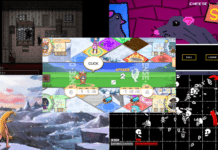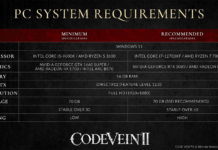When considering the potential use cases of blockchain technology in business and finance, a great place to look for a future roadmap is gaming and entertainment, a pattern that has long existed.
Venly (formerly known as Arkane Network) is one company that is ideally positioned to develop such solutions. Venly allows platforms to onboard users to digital wallets and store, create, and trade NFTs.
Venly co-founder and CEO Tim Dierckxsens said when he read the ethereum whitepaper back in 2014, he immediately saw how smart contracts could help build better businesses in the future.
At the time, he was a business analyst working with music licenses and rights. The applications for digital contracts and e-commerce platforms were significant.
“That’s the only way to to be able to get business referral agreements into the 21st century,” Dierckxsens said. “And then if you understand that, and you see that the value of having business contracts available on a technical layer would really change the way we do business, and we can actually start to drive a machine to machine economy.”
It took a couple of years before companies began working on proofs of concept. Dierckxsens and his team quickly saw that while there was promise, there was no base technology upon which creators could work toward fulfilling that potential.
They began to develop solutions on top of the blockchain so that creators using more traditional methods could work with existing technologies and blockchain. Venly would link the two.
“We’re a blockchain technology provider. We focus on three core aspects: wallet technology, NFT technology, and marketplace technology. Essentially, those are the pillars that you would need to be able to interact or facilitate transactions on networks like blockchain,” Dierckxsens said.
And that led to a strong interest in the got to market strategy of the gaming industry, he said. Consider the history of technological adoption, and gaming is always at the forefront, beginning with free-to-play systems which attract players who then spend money once they become engaged with the site. Think of a metaverse like Fortnite.
If your vision is limited to creating a free product that attracts users who (hopefully) spend money once they fall in love with you, it’s a limited one, and like the vast majority of free-to-play games, one doomed to fail. A better bet is to create an environment that produces valuable ecosystem stakeholders.
“So you’re not monetizing the player. You’re enabling the digital economy between everyone interacting within the metaverse,” Dierckxsens explained.
Why has gaming been such fertile ground for tech development that impacts other sectors of the economy?
As a pastime, there are no regulations or other barriers to entry, Dierckxsens said.
That makes it an excellent incubator for testing different value-based transactions. Perhaps a gamer wishes to buy a virtual token that enhances their strength, speed, or other performance aspects. Its underlying design is very similar to how a financial asset would be structured.
Of course, blockchain technology allows for these transactions, Dierckxsens said. Using the more limited example from above, a platform designer may only want people to buy assets from them and not be able to trade them amongst each other.
Just like it was above, this is a myopic viewpoint. You want participants to interact with and transact with each other. In doing so, they build stronger attachments to the brand.
“With the concept of playing and a digital trading economy within the game, we actually want the players to be able to facilitate each other and interact with each other,” Dierckxsens explained.
“Then that creates a digital economy within the game. And overall, that would become more interesting from a gaming point of view, as a conceptual point of view, because then you would be interacting with your peers as you’re developing a more engaging pastime, while at that moment you’re still increasing the value for yourself.”
Venly recently launched the MetaRing, an NFT representing a cross-metaverse access pass centered around utility. Its owners will be able to use the digital wearable to unlock special in-game utilities and enjoy unique benefits, including access to exclusive lands, events, discounts, and drops.
The company sees the future Internet as one with massively-scaled, interactive, and interoperable platforms of interconnected virtual worlds.
That is counter to our current state, where many metaverses operate independently of each other. The MetaRing places its owners at the center of the entire metaverse ecosystem, linking access to all experiences. Only 1,000 MetaRing NFTs will be produced.
“MetaRing is one of the few projects on the market that brings all metaverses together, offering ultimate interoperability,” says Stefan Colins, the metaverse partnerships director at Venly.
“By marrying interoperability with diverse layers of utility, we give more value to the NFT owners. We have a team at Venly that will be focused on striking deals with new metaverses and emerging players, meaning that the MetaRing benefits and value will only scale over the years to come.”
“Interoperability is the next frontier of the entire blockchain industry, and the metaverse is a platform enabled by users,” added Sandeep Nailwal, the co-founder of Polygon. “Venly’s MetaRing steps into the market with a unique value proposition: connecting users with the best projects of the Web3 space.”
Because there will be many metaverses, those who build bridges between them will become valuable players in the space.
Dierckxsens sees value coming to different stakeholders. They onboard users to their partners. Then comes the construction of various virtual worlds, where developers partner with other brands to build intellectual property used within the games. Sandbox has proven particularly adept by signing deals with brands such as Snoop Dogg, Atari, Sim City, the Walking Dead, and The Smurfs.
Normally, companies like Sandbox have an agreement with a brand or celebrity to use their intellectual property in exchange for a share of the revenue. In the future, Dierckxsens sees a much more attractive proposition whereby the brand or personality has its own NFT contract.
“You can own the digital assets that you create. You can create an identifier or a mapping so that your asset can actually have a visual representation within the game (or metaverse),” he explained. “And then what you’ll be able to do is say well, that one NFT contract from this one brand, that can actually relate to one or multiple of these games. It could even go as far as you say. One identifier of that one contract would be able to give a sword in a fighting game versus a car in a racing game versus a different type of assets in the game.”
So if a brand such as Nike has a metaverse presence, inhabitants can visit a Nike store and clothe their avatar or even buy items for themselves. You could click on a QR code within that world and create an NFT of a digital version of that sneaker.
Linking metaverses means establishing a true public blockchain that logs all transactions between them, Dierckxsens said. In typical transactions, some type of NFT is created, so the task becomes creating a token contract that can exist on multiple metaverses.
“Since the token contract is available on blockchain technology, and it is publicly available, that contract can exist in multiple games,” “Dierckxsens said.
“So then you have to go into the concept of having a game that would actually be open and willing to accept multiple token contracts from different parties to have that available within their own specific game.”
Every morning the LendIt Fintech News team scours the globe for the most important fintech stories of the day in the daily Global newsletter.
The Europe edition comes out on Monday, Wednesday, and Friday featuring the most important stories in European and UK fintech.
The Latin American newsletter arrives in your inbox on Tuesdays and Fridays. This is a trilingual newsletter featuring stories in Spanish, Portuguese, and English.
Tony Zerucha is a long-time contributor in the fintech and alt-fi spaces. A two-time LendIt Journalist of the Year nominee and winner in 2018, Tony has written more than 2,000 original articles on the blockchain, peer-to-peer lending, crowdfunding, and emerging technologies over the past seven years. He has hosted panels at LendIt, the CfPA Summit, and DECENT’s Unchained, a blockchain exposition in Hong Kong.












